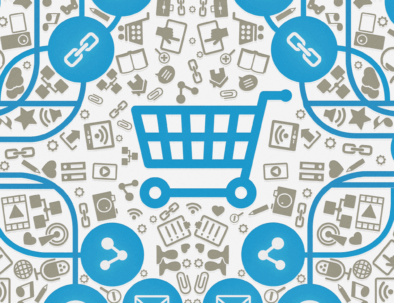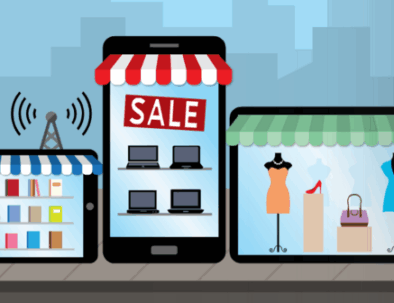After doing all the “hard work” of getting a customer on my site and getting them to press buy, why would anyone gift a high margin direct to consumer sale away to a retailer? This is the number one question new interested brands ask when considering an omnichannel strategy. The answer is simple: Increased online and wholesale business to make existing channel partners more loyal while creating incredible consumer experiences.
Already selling online? Great – You have already taken the first step to becoming omnichannel enabled but missing a vital aspect of your business in this endeavour… Offline sales. Too often brands treat their online and offline channels as that… Two separate channels. By combining the channels together you have the opportunity to make the ultimate sales experience for your end consumer and grow your repeatable wholesale business and believe it or not grow your online business too. From our experience in helping brands take market share from competitors, here is our rationale as to the top reasons to combine sales channels:
1) Increase Margin $’s
90% of retail sales still occur offline compared to just 10% online according to Forrester Research. Let’s just break this down in terms of numbers and what this means using a $100 item.
1 Direct to Consumer Sales = $100
9 Wholesale Sales = $450 (assumes a 50% margin)
Would you rather have $100 or $450? This doesn’t even take into account the average 20% cost to acquire a customer for a direct to consumer sale. Still not convinced? Keep reading…
2) Less Competition at Retail
Everyday thousands of new businesses are started and more than likely every month or so someone is aiming to compete with you. Thanks to modern eCommerce platforms making getting online to sell products easier than ever before more than likely this new competitor is going to be selling online. How do you stand out in a crowded environment? By offering increased conveniences to consumers, making your brand more trustworthy, and scaling your business quicker. The online environment contains roughly 10% of the market but how many people are fighting over that same sliver of the pie? Whereas the offline World has fewer competitors and has much larger revenue potential. But to stand out you have to do business differently to demonstrate demand for your products to capture a buyer’s attention. By developing an online to offline strategy, brands can leverage their strength online to influence the much larger wholesale channel to scale their business and leverage channel partners to reach new consumers. Read further to learn more.
3) Being Listed at Retail Lowers Your Customer Acquisition Costs
Quick question: How much does it cost to acquire your consumers? This includes marketing/advertising to attract the customer, developing content to maintain their interest, and perhaps even the promotion you recently launched in which they bought. Recent data indicates being listed in a store can lower your customer acquisition costs by as much as 21% as consumers want to experience a product in store before buying online. In working with retailers and price points over $350, only 1 in 10 people feel comfortable buying online without seeing the product first. Customers are 3X more likely to buy a high ticket item online when they can buy it from a local physical store that offers free returns and exchanges through an online to offline program. In an online world where Amazon rules the roost and competing with brands, customer discovery offline is increasing in importance and generates residual direct to consumer sales.
4) Selling through Dealers or Retailers Makes your Brand Trustworthy
Although we live in an age of the connected consumer where more shoppers feel comfortable buying online, many still appreciate using all of their senses when shopping at retail and that includes the ability to touch and feel. Retailers are viewed as curators of quality products and are the gatekeeper to ensuring a great customer experience. No one likes to deal with a poor product experience either the shopkeep or consumer. When consumers know your product is sold and supported locally it lowers their barriers to buying online. In fact, a recent A.T. Kearney study found that two thirds of consumers still rely on physical brick and mortar stores when shopping online both before and after purchase.The higher the price point the more likely this is to occur. Having your product listed at dealers across the country provides easy access to customers to experience your brand and subsequently purchase however they want on their own terms.
[vc_row][vc_column align=”center” column_colour=”rgba(135,163,191,0.1)” align_sm=”left”][vc_column_text]
Want to Scale Your Online & Wholesale Business by Selling Everywhere Your Consumers Buy?
Keep reading to discover the advantages of a true omni-channel strategy, but if you’d like an executive guide distilling everything, download The Enterprise Guide to Omni-Channel Ecommerce.
Inside, you’ll get one-pagers detailing …
Comprehensive data on the opportunities and threats
Merchant spotlights for insights on combining sales channels
A checklist to consider when implementing an omni-channel program
[/vc_column_text][/vc_column][/vc_row]
5) Low Cost Sales Force
Wholesale opens your business up to resellers who expose your product to new customers often times you would not have reached on your own. Think about it, you have a group of people who pay you money to sell your products and only get paid once they do so. This is a highly motivated sales force that is committed to pushing your products. By becoming an omnichannel brand you are demonstrating loyalty to the reseller in which enhances dealer relationships that can pay off tremendously in additional wholesale business. In addition, by participating in the much larger wholesale channel your products get in the hands of more consumers leading to increased brand interactions with consumers who can influence their friends/family, etc. that drives traffic back to your website. Essentially an army of fans that are unpaid sales people resulting in lower customer acquisition costs.
6) Dealers Sell What they Know
What do sales associates at retail sell? They are most likely to sell items from brands that are loyal, partner online, and drive traffic to their stores. If sales associates see your product moving or have a lift in inquiries they are naturally bound to want to learn more. As sales associate gravitate towards your brand they start consumer conversations differently with ‘we’ve been selling a lot of these lately’ mentality. We provide a constant marketing message to in-store staff that your company/products exist every time this happens.
7) Better Predictability in Your Business
Working with wholesale accounts are nice to have. High volume, repeatable business. No more are you always searching for your next customer to buy. By combining your online and offline channels together the peaks and valleys traditionally found in the direct to consumer business are smoothed out leading to more predictable revenues. Rather than always seeking your next sale, wholesale provides your team with breathing room to look further out with sales strategies to grow the business long-term.
8) Having a Retail Network Means Carrying Less Inventory
With In-store pickup and ship-from-store technology there is no need to warehouse as much product as it resides with your retail partners. Reducing your inventory improves cash flow so you can spend on other activities like digital marketing to increase sales. By selling online and having in-store pickup options available customers are three times more likely to buy. In addition inventory is kept closer to consumers where it can get discovered and/or shipped quicker to the consumer.
9) Offer New Customer Sought Features Such as Same Day Pickup
When retailers fulfill orders on your behalf your shipping costs go down, not to mention with in-store pickup you can offer FREE shipping to your customers without costing you anything…Not even labor. You can reduce your warehouse size and shift these operating costs to promotional activities that drive sales results.
10) Keep Spot in Store Secure
When retailers perform a review of a product category if your sales volume is low your spot in store is not guaranteed. When competing with retailers directly online you are essentially skewing the numbers against your favour where as you send less consumers to the store, the less likely a retailer will continue to sell your products where they can get discovered offline by new consumers or consumers who want to experience the product before buying. With 90% of retail sales still occurring offline it makes it a tough case to want to compete with a committed in market retailer. By partnering online with retailers, you can sell through product to protect your listing and provide insights to dealers of other products they should be stocking to expand your offline footprint.
11) Increased Convenience for Your Customers
Customers want more time and money saving purchasing alternatives. Customers are already conditioned to in-store pickup as over 50% of eCommerce shoppers have performed this activity. In-store pickup items can be picked up same day and at no cost for shipping resulting in less shopping cart abandonment on your online store. Consumers can shop 24/7 from the convenience of their home and have the professional service/experience only a retailer can provide. In addition, any returns and exchanges are still handled locally by your retail partner.
12) Removes Common Roadblocks in Online Purchase Decision
The most common roadblocks preventing customers from purchasing online are shipping costs and returns/exchanges. According to Walker Sands 83% of customers would prefer to buy with free shipping and are nearly three times more likely to buy if free returns were provided. These are costly activities and require a support team to handle the process. With ShipEarly and a retail network these activities are shifted to the retailer who in exchange obtains credit for the sale. As a result 44% of customers are more likely to purchase online if they can pick up the item in-store according to Nextopia. 45% of retail transactions are web-influenced offline sales which is 3X bigger than direct to consumer where ShipEarly comes into effect.
13) Increase Margins at Retail
If a retailer does not have an item in stock, unlike conventional retail, they don’t have to make the same margins and a higher invoice price can be had. You are sending a pre-sold item to the retailer in which no risk was taken for the sale. Your team provides that retailer the insights of knowing there is a market for the product, introduces the retailer to a new customer, and provides the opportunity to up-sell the consumer with ancillary products or services once in store to offset the higher invoice price. With free shipping, free returns, discounting online sales, the fact that shipping costs are increasing faster than inflation, and high customer acquisition costs for online sales, there is starting to become an equilibrium between online and wholesale.
14) Prevent Lost Sales as Consumers Switch Between Sales Channels
We know consumers shop between sales channels whether it is online to offline or vice versa to buy on their own terms. By siloing sales channels, sales may be lost as consumers cross-channel shop due to out of stock situations or competitive retail distractions. Did you know that up to 80% of sales are in jeopardy of being lost as consumers switch between channels? The more seamless and connected you can make the consumer purchase the less likely sales are to be lost.
15) It’s What Customers Want
Consumers – We all need them and must do what we can to earn them to grow market share and that includes catering to today’s connected consumer who has more information than ever before at his/her fingertips before making a decision. The retail battlefield can be won and lost on customer experience. 58% of consumers prefer to shop at physical retail. More choice, more flexibility, and shopping local are all elements that can boost conversions and revenue by letting consumers shop on their terms. Consumers want to view local inventory (82%), buy online and pickup at a store (72%), and be able to return their purchases locally (69%). This is all possible by combining sales channels.
16) In-Store Experiences Matter
The physical store is no longer just about selling inventory – it provides an increasingly unique way to engage shoppers, and create value in ways that meet the demands of the modern consumer. A more personal, customer-centric approach is required, otherwise people will not come back and associate their purchase as transactional rather than a relationship. The shopping experience must be more than just stop and shop.
17) Include Value Added Services
Items shipped directly to consumers homes misses a larger portion of the population who want to buy online with service. Such services consumers are seeking in addition to online convenience include: assembly, a showroom, installs, store pickup/returns, and white glove delivery. Higher end consumers, we are all chasing, want the best of online and offline retail.
We Provide the Best of Online and Offline Worlds
With ShipEarly’s cross-channel sales platform you can offer consumers the best of online and offline shopping. You do not have to choose between selling online or through dealers, but instead can place consumers in the drivers seat over how and when they want to buy. A blended approach provides your customers more choice to buy on their terms. Selling direct should be part of a companies strategy, but consideration should be had for physical retail as overtly aggressive direct to consumer tactics will stunt your future growth and damage retail relationships.





